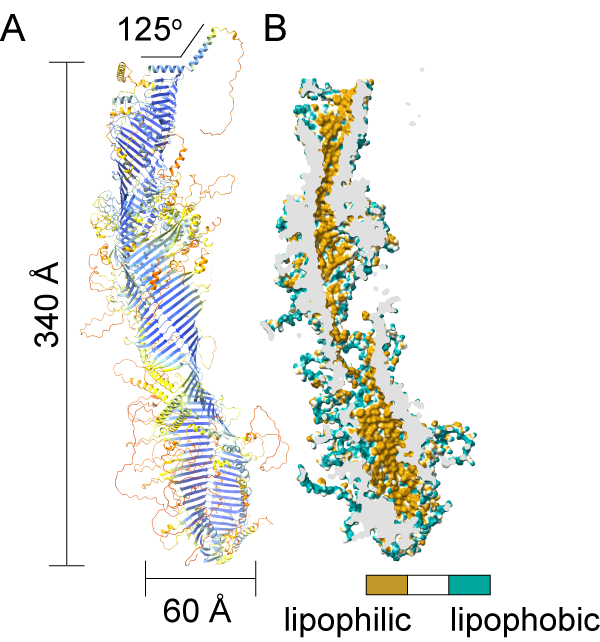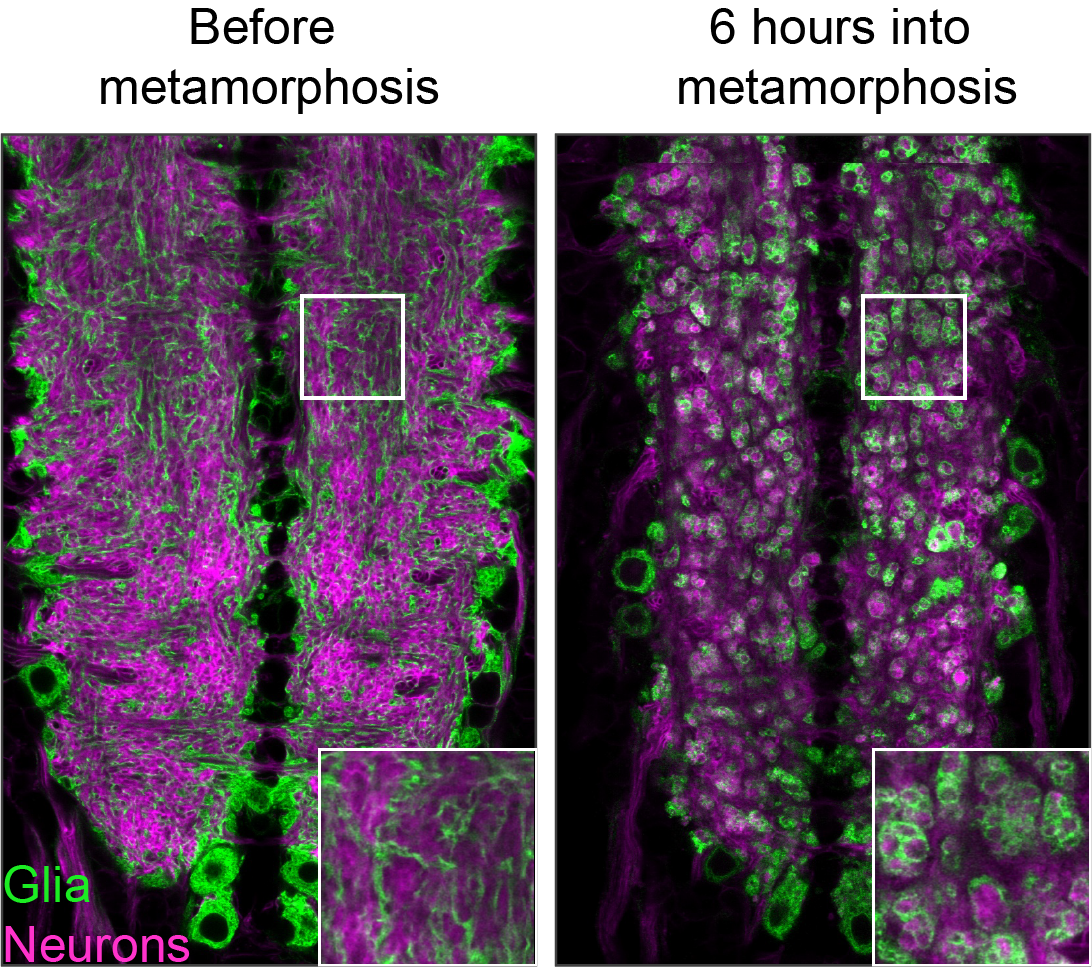
What is the function and regulation of Bridge-Like Lipid Transfer Proteins (BLTPs)?
Recently, our lab discovered that Bridge-Like Lipid Transfer Proteins (BLTPs) are crucial for the massive membrane expansion required during glial phagocytosis. These proteins act as molecular highways for lipid transport, but the mechanisms that regulate their function and localization are still a mystery. Our research focuses on uncovering the biology of these fascinating proteins, including how they are recruited to specific cellular sites and how their activity is controlled. We use a combination of cell biology, genetics, and biochemical approaches to study BLTPs, with the goal of gaining new insights into how lipid dynamics are regulated during key cellular processes.
What are the cellular mechanisms that enable glia to perform massive phagocytosis?
During neuronal remodeling, glia undergo a remarkable transformation, shifting from a supportive role to actively “eating” and clearing vast amounts of neuronal debris. This process, known as phagocytosis, requires a rapid and massive expansion of the glial cell membrane. This presents a significant cellular challenge: how do these cells produce and manage so much new membrane in such a short period of time? We are fascinated by this dramatic cellular event and are working to unravel the intricate cellular processes that allow glia to achieve this high level of consumption.


How do neurons and glia coordinate to refine neuronal circuits during development?
The development of the nervous system is a dynamic process where a sculptor-like refinement of circuits is essential for function. While we know that both neurons and glia work together to eliminate excess neurons and prune unnecessary connections, the precise molecular mechanisms that govern this cooperation are not fully understood. Our lab investigates how these two cell types communicate and act in concert to build a mature brain. We use the powerful Drosophila nervous system as our model to uncover these fundamental principles, which are often disrupted in neurodevelopmental disorders like autism and schizophrenia.